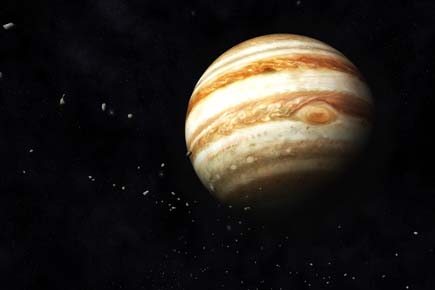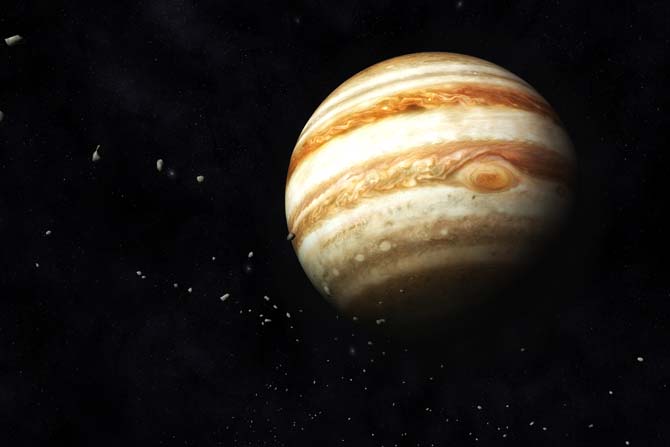Jupiter is a complex, turbulent world, with Earth-sized cyclones at its poles and storm systems that travel deep into the heart of the gas giant, according to the first science results obtained from NASA's Juno spacecraft


ADVERTISEMENT
Washington: Jupiter is a complex, turbulent world, with Earth-sized cyclones at its poles and storm systems that travel deep into the heart of the gas giant, according to the first science results obtained from NASA's Juno spacecraft.
"We are excited to share these early discoveries, which help us better understand what makes Jupiter so fascinating," said Diane Brown, Juno programme executive at NASA.
"It was a long trip to get to Jupiter, but these first results already demonstrate it was well worth the journey," said Brown. Juno was launched in 2011, and entered Jupiter's orbit on July 4 last year.
The findings from the first data-collection pass, which flew within about 4,200 kilometres of Jupiter's swirling cloud
tops on August 27 last year, appear in the journals Science and Geophysical Research Letters.
"There is so much going on here that we didn't expect that we have had to take a step back and begin to rethink of this as a whole new Jupiter," said Scott Bolton, Juno principal investigator from the Southwest Research Institute in San Antonio.
Among the findings that challenge assumptions are images show both of Jupiter's poles are covered in Earth-sized
swirling storms that are densely clustered and rubbing together.
"We're puzzled as to how they could be formed, how stable the configuration is, and why Jupiter's north pole doesn't look like the south pole," said Bolton.
Researchers also found that Jupiter's iconic belts and zones are mysterious, with the belt near the equator penetrating all the way down, while the belts and zones at other latitudes seem to evolve to other structures.
The data suggest ammonia clouds over the planet are quite variable and continue to increase up to a few hundred miles or
kilometres - as far as the Juno's instruments can observe. Prior to the Juno mission, it was known that Jupiter had the most intense magnetic field in the solar system.
Measurements of the massive planet's magnetosphere indicate that Jupiter's magnetic field is even stronger than
models expected, and more irregular in shape.
The magnetic field greatly exceeded expectations at 7.766 Gauss, about 10 times stronger than the strongest magnetic field found on Earth.
"Juno is giving us a view of the magnetic field close to Jupiter that we've never had before," said Jack Connerney, Juno deputy principal investigator.
"Already we see that the magnetic field looks lumpy. It is stronger in some places and weaker in others," said
Connerney.
"This uneven distribution suggests that the field might be generated by dynamo action closer to the surface, above the
layer of metallic hydrogen," he said.
The next flyby is scheduled for July 11, when Juno will fly directly over one of the most iconic features in the entire solar system - Jupiter's Great Red Spot.
 Subscribe today by clicking the link and stay updated with the latest news!" Click here!
Subscribe today by clicking the link and stay updated with the latest news!" Click here!







